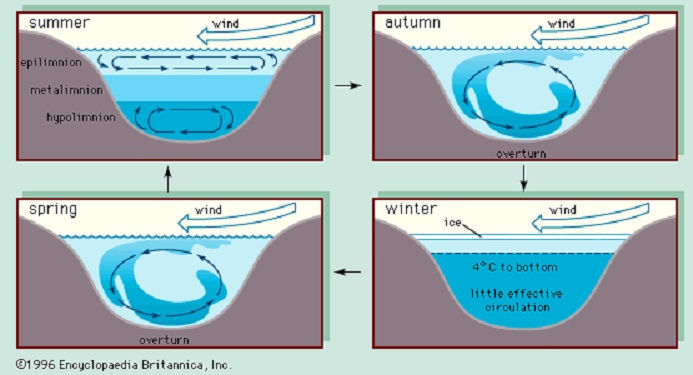

Gas exchange across an air-water interface: Experimental results and modeling of bubble contribution to transfer. Effects of an arctic environment on the origin and development of freshwater lakes. 105 In International Conference on the Role of the Polar Regions in Global Change, June 11–15, 1990, University of Alaska, Fairbanks. An interannual comparison of arctic methane emissions: a climatic warming scenario. Process of gas exchange across an air-water interface. Changing climate: Geothermal evidence from permafrost in the Alaskan arctic. The biogeochemistry and zoogeography of lakes and rivers in arctic Alaska. Arctic lakes and streams as gas conduits to the atmosphere: implications for tundra carbon budgets. On the exchange of gases between the atmosphere and the sea. Phytoplankton production in Char Lake, a natural polar lake, and in Meretta Lake, a polluted polar lake, Cornwallis Island, Northwest Territories. Jirka (eds), Gas Transfer at Water Surfaces. Parametrization of air/lake gas exchange. Effects of hydration on carbon dioxide exchange across air-water interface. Dowden, Hutchinson & Ross, Inc., Stroudsburg, 514 pp. Whole-lake radiocarbon experiment in an oligotrophic lake at the Experimental Lakes Area, Northwestern Ontario. A stable carbon isotope study of dissolved inorganic carbon cycling in a softwater lake. Cambridge University Press, Cambridge: 587–633. Moore (eds), Tundra Ecosystems: A Comparative Analysis. Decomposition and accumulation of organic matter in tundra. Gas exchange rates across the sediment-water and air-water interfaces in south San Francisco Bay. Regional intercomparison of general circulation model predictions and historical climate data. Gas exchange rates in small Canadian shield lakes. Chemically enhanced CO 2 gas exchange in a eutrophic lake: A general model. CO 2 exchange over the Alaskan arctic tundra: meteorological assessment by an aerodynamic method. Carbon dioxide partial pressures in arctic surface waters. Biogeochemistry of manganese- and iron-rich sediments in Toolik Lake, Alaska. Sediment accumulation rates in an Alaskan arctic lake using a modified 210Pb technique. Dowden, Hutchinson & Ross, Inc., Stroudsburg: 458–482.Ĭornwell, J. Bunnell (eds), An Arctic Ecosystem, the Coastal Tundra at Barrow, Alaska. Carbon and nutrient budgets and their control in coastal tundra. New equations for computing vapor pressure and enhancement factor. Gas exchange rate measurements in natural systems. The influence of wind on CO 2-exchange in a wind-wave tunnel, including the effects of monolayers. Gas exchange, photosynthetic uptake, and carbon budget for a radiocarbon addition to a small enclosure in a stratified lake. John Wiley & Sons, New York, 541 pp.īower, P.

The greenhouse effect, climate change, and ecosystems. Cambridge University Press, Cambridge, 715 pp.īolin, B., B. Tundra ecosystems: A comparative analysis. Interaction of increasing atmospheric carbon dioxide and soil nitrogen on the carbon balance of tundra microcosms. Arctic tundra: A source or sink for atmospheric carbon dioxide in a changing environment? Oecologia 53: 7–11.īillings, W. Carbon balance of Alaskan tundra and taiga ecosystems: past, present and future. The release of carbon from aquatic systems to the atmosphere averaged 24 g C m −2 y −1, and in coastal areas where up to 50% of the surface area is water, this loss equals frac 1/5 to 1/2 of the net carbon accumulation rates estimated for tundra.Ībelson, P. In lakes and rivers the groundwater input of dissolved CO 2 and CH 4 is supplemented by in-lake respiration of dissolved and particulate carbon washed in from land. Nutrient fertilization experiments resulted in decreased CO 2 release from a lake due to photosynthetic uptake, but no change in CO 2 release from a river due to the much faster water renewal time. Seasonal trends include a buildup of CO 2 and CH 4 under ice during winter, and often an increased CO 2 flux rate in August due to partial lake turnover. Gas fluxes to the atmosphere ranged from −6.5 to 59.8 mmol m −2 d −1 for CO 2 and from 0.08 to 1.02 mmol m −2 d −1 for CH 4, and were uncorrelated with latitude or lake morphology. Nearly all waters were super-saturated with respect to atmospheric pressures of CO 2 and CH 4. Partial pressures of CO 2 and CH 4 were measured directly or calculated from pH and alkalinity or DIC measurements for 25 lakes and 4 rivers on the North Slope of Alaska.


 0 kommentar(er)
0 kommentar(er)
